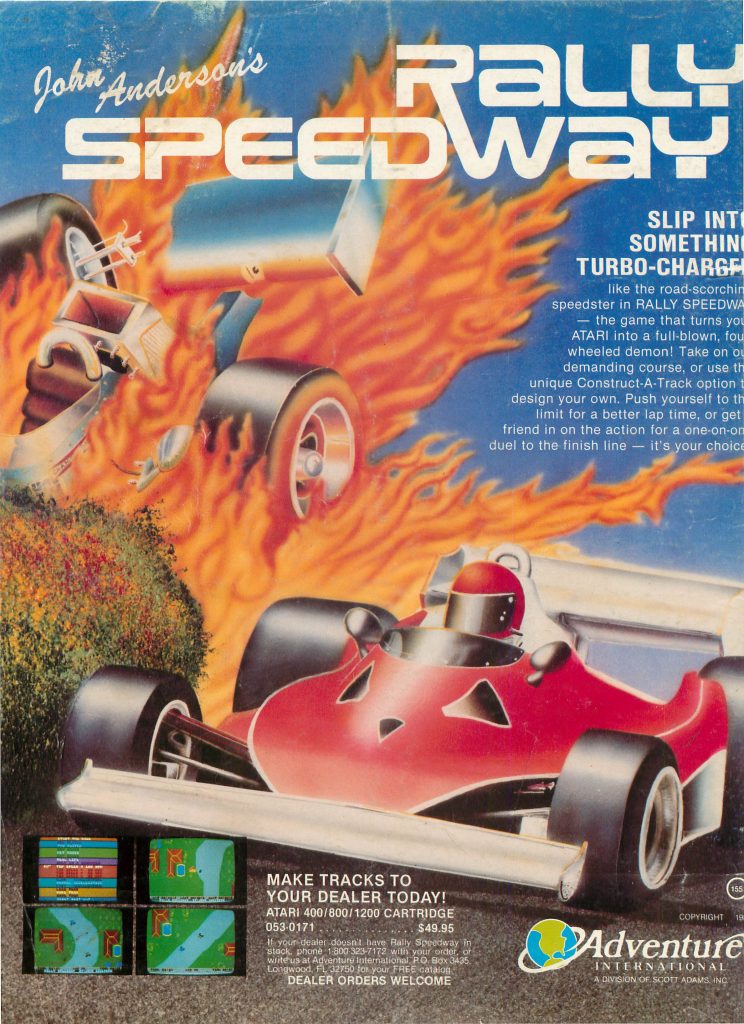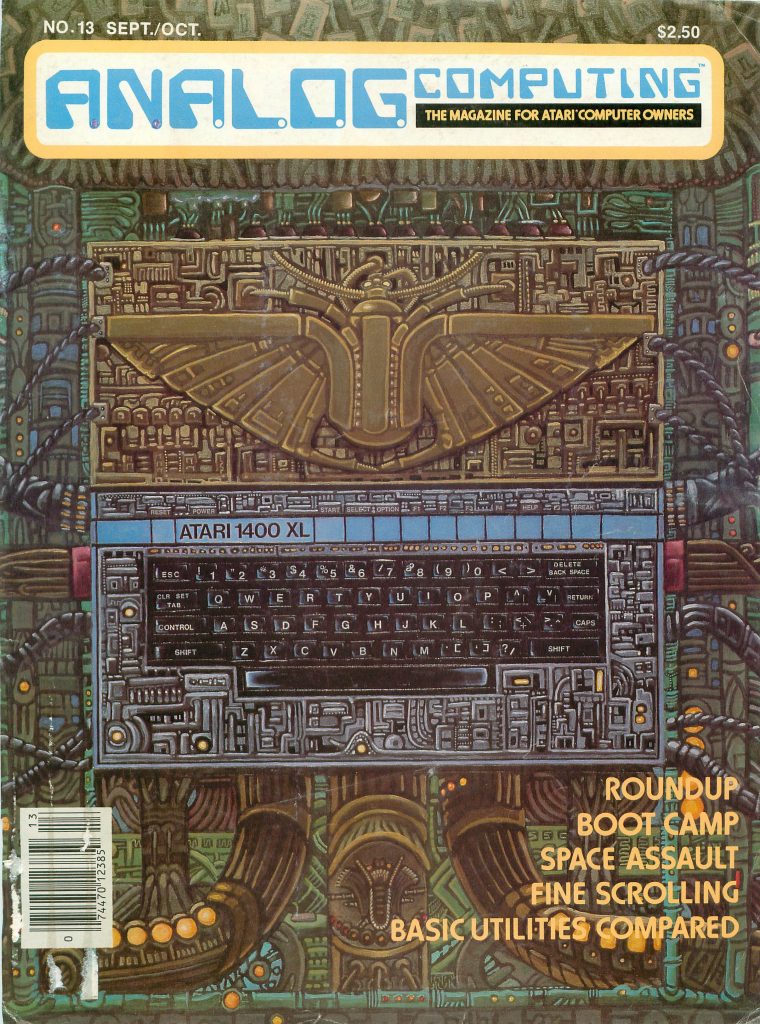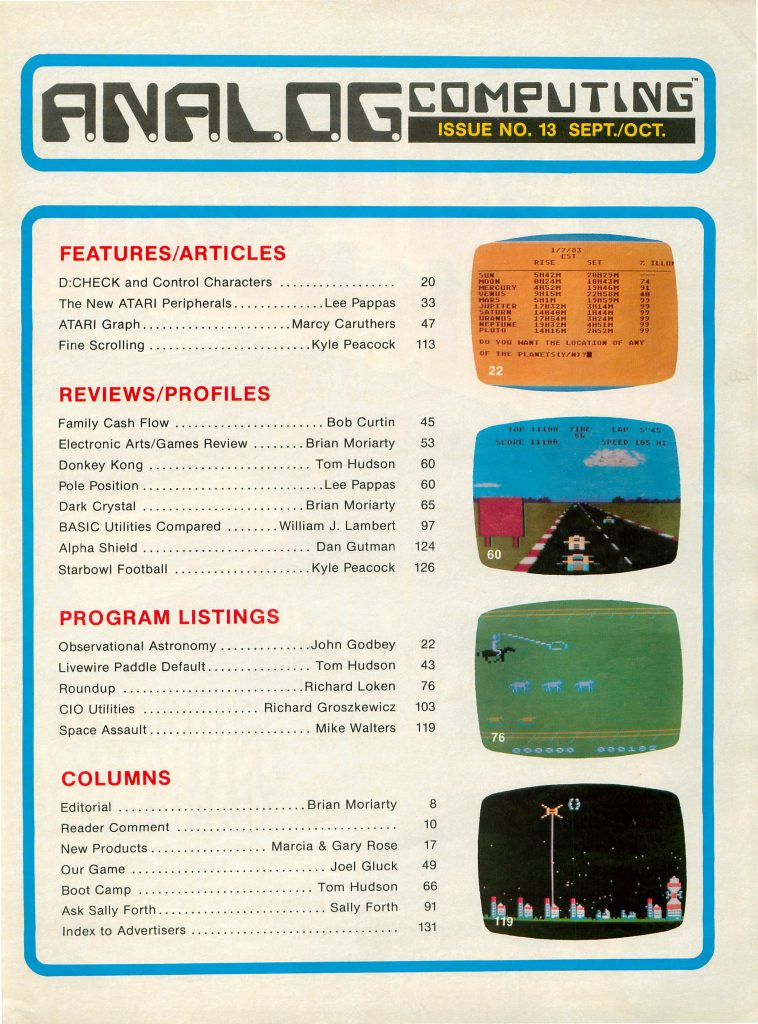Source: ANALOG Computing – September 1983
ANALOG Computing was probably the most popular and longest running magazine for Atari 8-bit computers in the U.S. The September 1983 issue includes:
Features/Articles
- The New ATARI Peripherals – The 1983 Summer CES was a pretty big event for Atari. New products announced or show there include the 600XL, 800XL, 1400XL, and 1450XLD computers. In addition, there were numerous new peripherals including three different printers, the 1050 Disk Drive, 1030 Direct Connect Modem (300 baud), CX77 Touch Tablet, CX80 Trackball, Atari CP/M Module, and lots more.
- ATARI Graph – A cryptographic puzzle.
- Fine Scrolling – Part one of a tutorial on scrolling on the Atari 8-bit including programming examples and a discussion of what various games do, including Defender, Caverns of Mars and Eastern Front.
Reviews/Profiles
- Family Cash Flow – Software for keeping track of your money.
- Electronic Arts/Games Review – Reviews of several Electronic Arts games including Archon, M.U.L.E., Pinball Construction Set, and Worms?
- Donkey Kong – A conversion of the arcade classic on cartridge.
- Pole Position – Another arcade conversion on cartridge. I got really good at this game on the Commodore 64.
- Dark Crystal – A graphics adventure game based on the movie of the same name.
- BASIC Utilities Compared – A look at three different programming utility packages including BAIC Commander, BASIC Debugger, and Monkey Wrench II.
- Alpha Shield – An action game in which you must defeat the alien base.
- Starbowl Football – A pretty good though difficult football game.
Program Listings
- Observational Astronomy – A type-in program that allows you to enter your latitude and longitude as well as the date and it will tell you what objects are in the night sky.
- Livewire Paddle Default – A modification to a previous type-in game that sets the paddle controllers as the default instead of the joystick.
- Roundup – A type-in game in which you must herd and lasso cattle.
- CIO Utilities – Utilities to speed up disk and cassette input and output.
- Space Assault – A type-in game in which you must protect your colony from invading aliens. It sounds like a cross between space invaders and missile command.
Columns
- Editorial – Alan Alda’s endorsement deal with Atari and crediting programmers for their work.
- Reader Comment – Letters from readers regarding hardware add-ons, the San Diego Computer Society Computer Fair, software piracy, and more.
- New Products – A look at new products including Blue Max, Zaxxon, Dimension X, Drelbs, Shadow World, Rainbow Walker, Wavy Navy, The Dark Crystal, Mr. Cool, Moon Shuttle, Pooyan, Satan’s Hollow, Lord of the Rings, Operation Whirlwind, Silicon Warrior, Gateway to Apshai, Jumpman Jr., River Raid, and lots more.
- Our Game – A column on game design in which reader ideas are explored.
- Boot Camp – An introduction to assembly language.
- Ask Sally Forth – Comparing the speed of FORTH with BASIC.

…and more!








